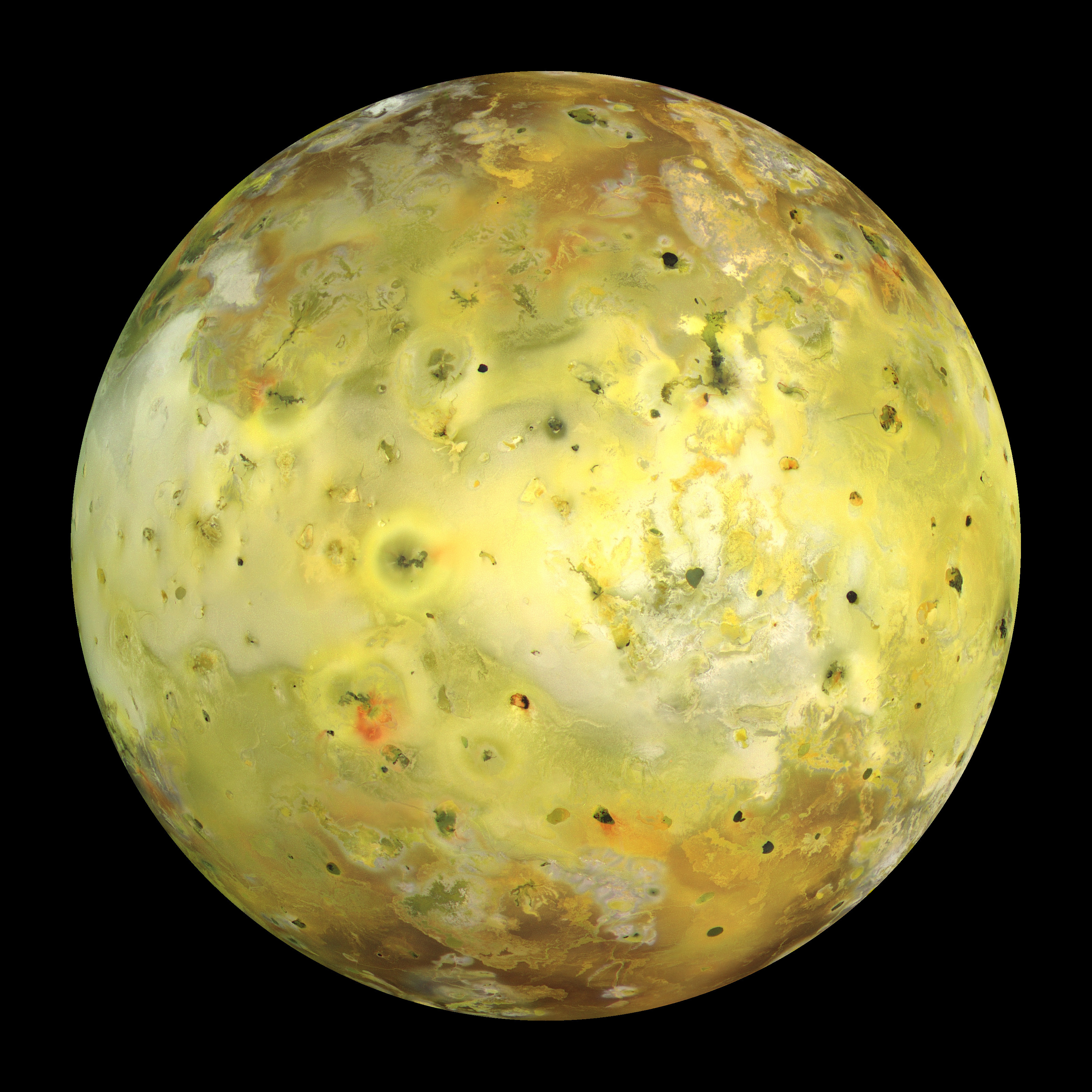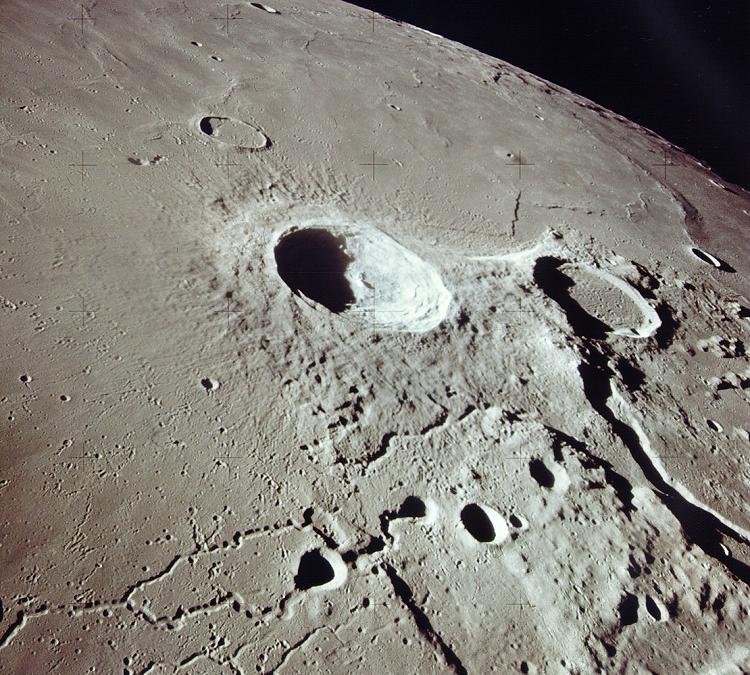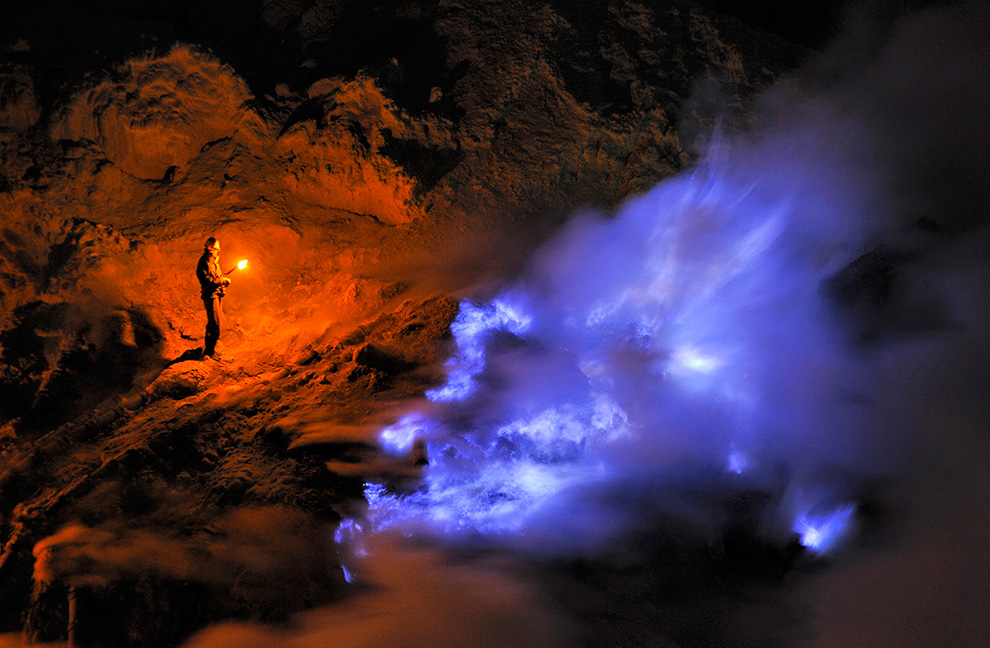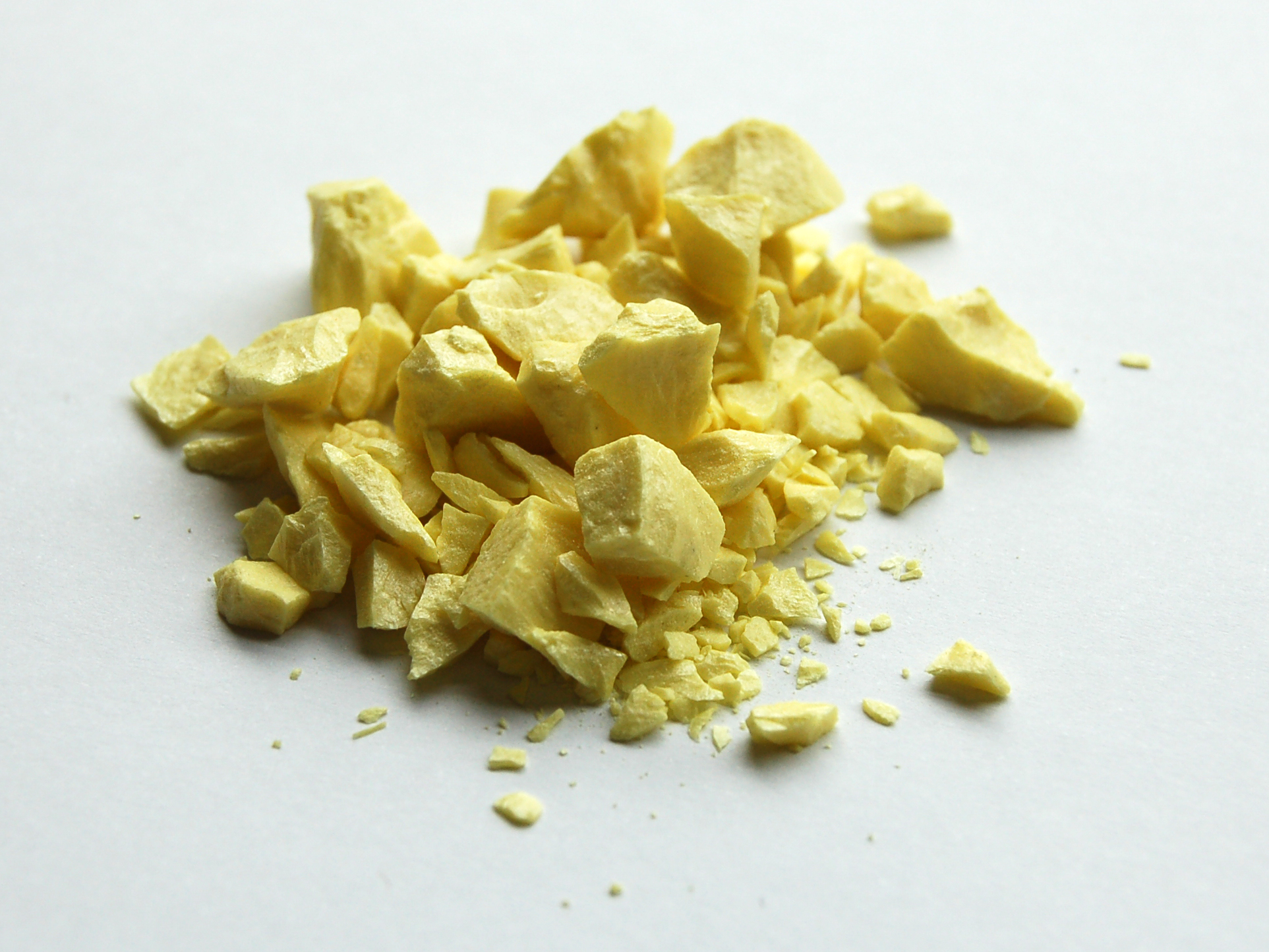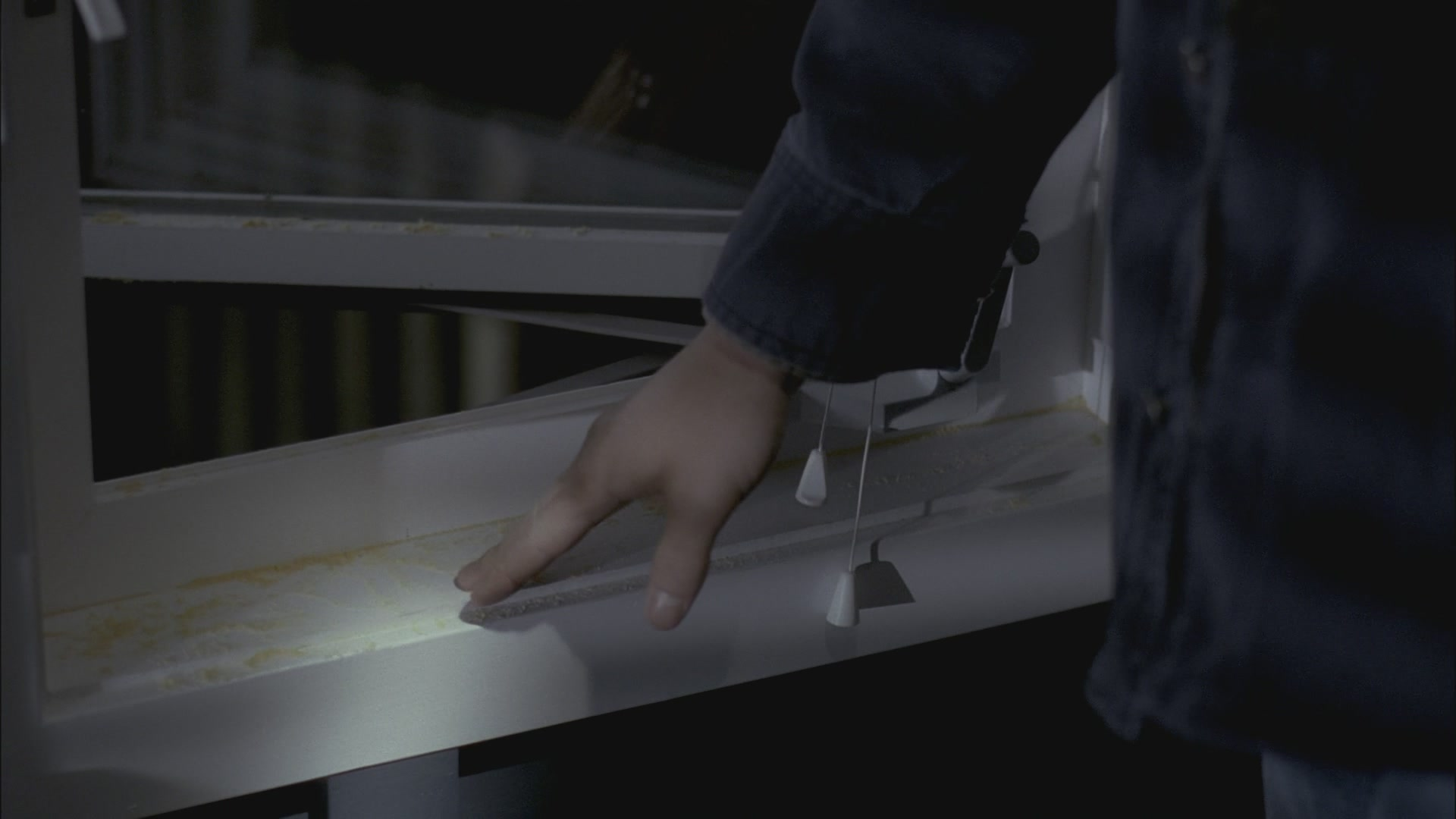Here is a video explaining sulfur's role in alchemy further:
Saturday, March 29, 2014
Alchemy
Alchemy, a very interesting study of science, is modern science combined with practices and principles related to mythology,
magic, religion, and spirituality.
Here is a video explaining sulfur's role in alchemy further:
Here is a video explaining sulfur's role in alchemy further:
Space: The Final Frontier
This is one of Jupiter's seemingly infinite moons, Lo.
Lo is the most volcanically active thing in the solar system and is third largest of Jupiter's moons. Lo itself is extremely hot. The surface of the moon is covered in magma that spews from volcanoes and spreads itself all over the surface. The molten itself is made up of sulfur and other compounds. Sulfur dioxide also is the primary constituent of a thin atmosphere on Lo. Lo is one of the Galilean moons, meaning it was discovered by Galileo Galilei, although Galileo did not name the sulfur ridden planet. In the mid-1800s, Lo was named after the daughter of Inachus in the Roman mythology. Lo was raped by Jupiter, and in Jupiter's attempts to hide this from his wife Juno, Juno ended up turning Lo into a heifer.
Hitting more close to home, on the crater of Aristarchus on the moon, there are signs of sulfur deposits. The crater itself is an impact crater and is considered the brightest of the large formation on the lunar surface. It is so bright, that it can be seen by the naked eye. Not only has the crater shown signs of sulfur, but it emits radon gas, which was measured by the Lunar Prospector spacecraft.
Lo is the most volcanically active thing in the solar system and is third largest of Jupiter's moons. Lo itself is extremely hot. The surface of the moon is covered in magma that spews from volcanoes and spreads itself all over the surface. The molten itself is made up of sulfur and other compounds. Sulfur dioxide also is the primary constituent of a thin atmosphere on Lo. Lo is one of the Galilean moons, meaning it was discovered by Galileo Galilei, although Galileo did not name the sulfur ridden planet. In the mid-1800s, Lo was named after the daughter of Inachus in the Roman mythology. Lo was raped by Jupiter, and in Jupiter's attempts to hide this from his wife Juno, Juno ended up turning Lo into a heifer.
Hitting more close to home, on the crater of Aristarchus on the moon, there are signs of sulfur deposits. The crater itself is an impact crater and is considered the brightest of the large formation on the lunar surface. It is so bright, that it can be seen by the naked eye. Not only has the crater shown signs of sulfur, but it emits radon gas, which was measured by the Lunar Prospector spacecraft.
Uses in Today's World
If you've looked at some of my other posts, you'll see that sulfur is mined a lot and for a lot of different purposes.
Sulfur occurs in natural gases and petroleum that are important to our every day commutes, but sulfur is not actually used in these. The sulfur must be extracted from the gases in order for them to be used.
Sulfuric acid, an extremely common form of sulfur, is found many things. This includes fertilizers, matches, cellophane, animal feed, cement, explosives, glass, fumigants, and as a preservative in dried fruit products.
 One of the main uses for sulfur throughout history was for gunpowder. There is an online site dedicated to taking precautions when using sulfuric acid and pure sulfur in industrial factories. As you probably know
One of the main uses for sulfur throughout history was for gunpowder. There is an online site dedicated to taking precautions when using sulfuric acid and pure sulfur in industrial factories. As you probably know
by now, sulfur is extremely dangerous in all its forms. It can cause disease, burning, and infection.
Sulfur is put into animal feed for many reasons. In cattle and dairy cows, it improves digestion, weight gain, and carcass grading. It also improves resistance to parasites, urinary excretion, production of milk, and the bicarbonate levels in blood. In hogs it also improves digestion, resistance to parasites, and feed intake. And finally, in sheep and goats it improves digestion, resistance to parasites, strength of wool, survival rates for lambs, and resistance to poisons from acid in grasses. But the use of sulfur in animal feed if being challenge, due to a study at Iowa State University that shows Polio in cattle may be caused by the sulfur toxicity. For more information, click here.
Sulfur occurs in natural gases and petroleum that are important to our every day commutes, but sulfur is not actually used in these. The sulfur must be extracted from the gases in order for them to be used.
Sulfuric acid, an extremely common form of sulfur, is found many things. This includes fertilizers, matches, cellophane, animal feed, cement, explosives, glass, fumigants, and as a preservative in dried fruit products.
 One of the main uses for sulfur throughout history was for gunpowder. There is an online site dedicated to taking precautions when using sulfuric acid and pure sulfur in industrial factories. As you probably know
One of the main uses for sulfur throughout history was for gunpowder. There is an online site dedicated to taking precautions when using sulfuric acid and pure sulfur in industrial factories. As you probably know by now, sulfur is extremely dangerous in all its forms. It can cause disease, burning, and infection.
Sulfur is put into animal feed for many reasons. In cattle and dairy cows, it improves digestion, weight gain, and carcass grading. It also improves resistance to parasites, urinary excretion, production of milk, and the bicarbonate levels in blood. In hogs it also improves digestion, resistance to parasites, and feed intake. And finally, in sheep and goats it improves digestion, resistance to parasites, strength of wool, survival rates for lambs, and resistance to poisons from acid in grasses. But the use of sulfur in animal feed if being challenge, due to a study at Iowa State University that shows Polio in cattle may be caused by the sulfur toxicity. For more information, click here.
Wednesday, March 26, 2014
Kawah Ijen: The Blue Volcano
In East Java, Indonesia, Kawah Ijen stands tall in the night sky. Within the volcano, there is a small sulfur mine where blue burning sulfur pours out. In the crater, there is a 200m deep lake of sulfuric acid where workers retrieve enormous chucks of pure sulfur.
Here is more pictures of the mountain:
The environment around the molten crater is highly toxic. The photographer, Oliver Gruneweld, braved the treacherous environment and photographed the beautiful flames. At the beginning of the year, he also released a documentary in French about the volcano.
Here is more pictures of the mountain:
Don't you just want to touch it?
Tuesday, March 25, 2014
Basic Information
Name: Sulfur or Sulphur; Latin for "burning stone"
The word itself is almost interchangeable with the Latin word for fire.
Symbol: S
The word itself is almost interchangeable with the Latin word for fire.
Symbol: S
Atomic Number: 16
Atomic Mass: 32.065
Standard State: Solid and 298 Kelvins
Classification: Non-metallic
Group Number: 16
Group Name: Chalcogen
Period: 3
Color: Lemon Yellow
Density: 2.07 gm/cm cubed
Boiling Point: 717.75 Kelvins
Melting/Freezing Point: 385.95 Kelvins
Lewis Dot Structure:
Lewis Dot Structure:
Solid Form:
Crystallized Form:
Liquid Form:
Molten lava and extremely hot
Burning Form:
A glorious bright blue
Gas Form:
Dusty smoke, dangerous to breath in
Burning Form:
A glorious bright blue
Gas Form:
Dusty smoke, dangerous to breath in
Science Cat Form:
Pop Culture
In this post we will discuss the many different ways that sulfur has laced itself into pop culture.
Harry Potter
In Harry Potter, sulfur is only referenced once. When describing the contents of Zonko's Joke Shop, a store for magical wizarding pranks, in Diagon Alley, one of the big sellers was Belch Powder. Belch Powder could be used to make yourself sick enough to get out of class. One of the main ingredients in Belch Powder is Vitriol, which is the historical name for sulfuric acid.
Supernatural
In one episode, where one of the main characters is sent into 2014 (which was considered the future when the episode aired back in 2009) there is an apocalypse called the Croatoan Virus. The virus, when infected, causes humans to turn into very aggressive forms of zombies.
The virus was created by an evil creature, called a Leviathan, from purgatory, that wanted to kill off human kind. It was to be disguised as a cure for swine flu (again, 2009) and administered to the public. The main ingredient in the drug was sulfur.
Subscribe to:
Posts (Atom)
